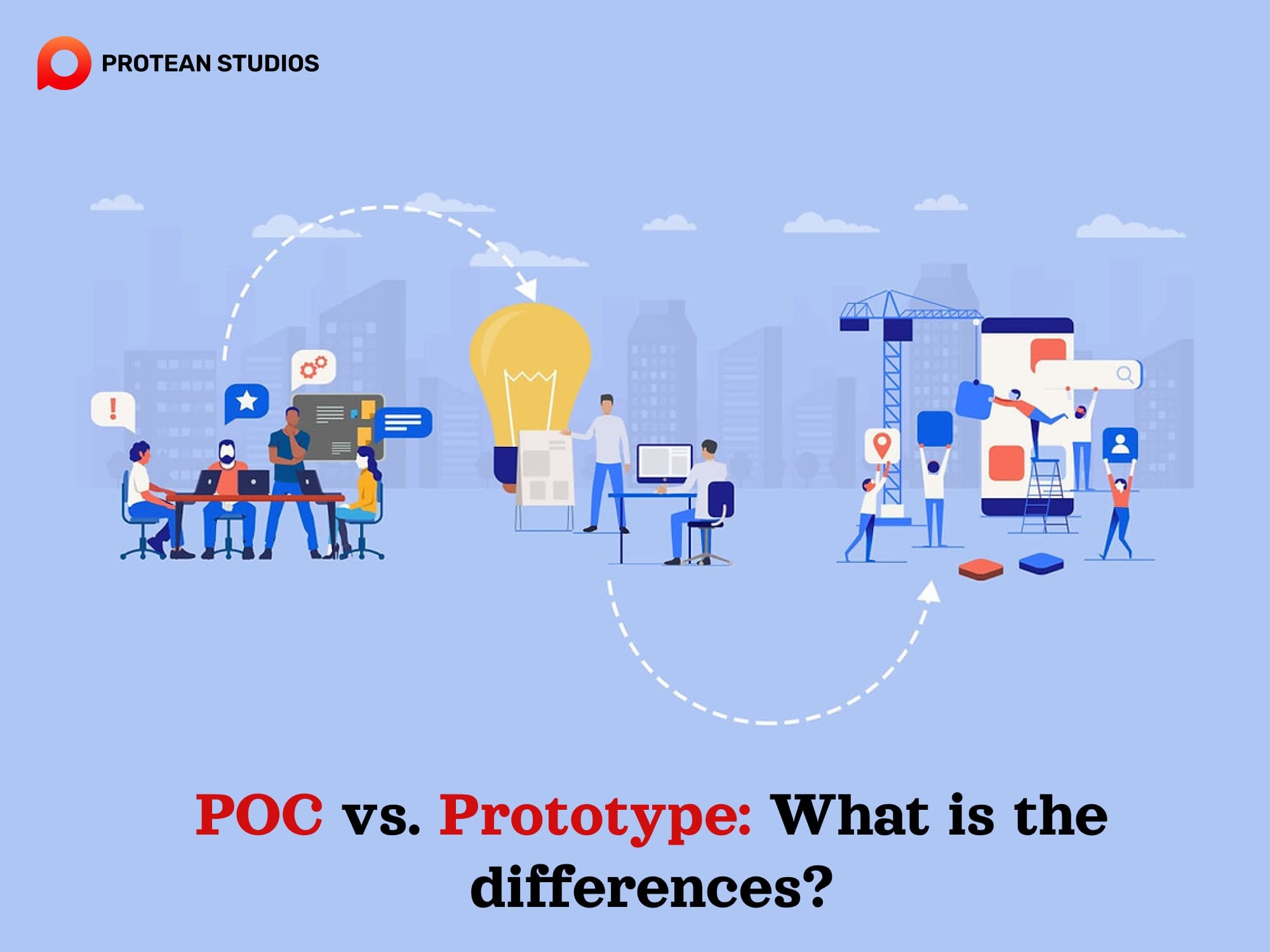When developing a new product or service, testing its feasibility, functionality, and efficiency is necessary before launching it to the public. This is where proof-of-concept (POC) and prototype play an important role in product development. These are two common methods of validating an idea and demonstrating its potential value.
Yet, they are not the same thing, and they serve unique purposes. In this blog post, we will explain the key differences between POC and prototype and how to use them in your product development process.
Understanding the POC and prototype
Before delving into the difference between POC and prototype, we will give some basic information about these methods, as follows:

1. Definition of the proof of concept
A proof of concept is a demonstration that a proposed idea, product, service, or system is workable and can deliver the expected results. People often make a POC in the early stages of a project to test the viability and potential of the concept before investing more time, money, and resources into it.
The main purpose of a POC is to provide evidence that the concept is worth pursuing further. Besides, it also helps developers gain feedback and support from the relevant parties if they have errors or unsuitable things. To know more about POC, you can see the blog: What is a Proof of Concept (PoC)?
2. What is the prototype?
A prototype is a preliminary version of a product or system that is used to test its functionality, design, and usability. A prototype can be a physical or digital model, depending on the nature of the project.
Teams often iterate on creating prototypes, integrating feedback from users and stakeholders. The goal is to improve the prototype until it meets the desired specifications and expectations. This version is very useful for validating assumptions, identifying problems, and evaluating solutions before investing in the final development and deployment of the product.
There are various types of prototypes:
Low-fidelity prototypes consist of fundamental sketches or wireframes.
High-fidelity prototypes are intricate, functional models.
Clickable prototypes are interactive models that enable users to navigate through the software product.
Non-functional prototypes mimic the appearance of the final product without implementing the actual functionality.
How to use the POC and prototype
A proof of concept is great for checking if your ideas work before putting in a lot of effort. If the idea doesn't work, it's easy to change or remove it. Thus, people can make a proof of concept when they're not sure if their development idea is worthwhile. A good POC will show the limits of the idea and check if it fits the customers' needs.

Besides, a prototype is best for trying out software ideas with users and stakeholders. If a product has a lot of user interaction, a prototype helps your team create a good-looking design and ensure a great user experience. A prototype builds on what developers learned from a proof of concept, but it shows the value of the idea more clearly.
A prototype is like a rough draft of the final product. It gives the team time to make changes and improvements. Yet, it's more expensive to drop the whole idea at this stage.
Distinguishing between a POC and a prototype

Proof of concept and prototype differ in their primary purposes within the product development process. Here are some basic criteria to make the difference between the two types clear:
Criteria | POC | Prototype |
Form of Implementation | A simplified method that tests the core idea and feasibility of a concept. | A small working model that simulates the main features and functions of a product. |
What is it? | A document analyzing a product. |
|
Target Audience | Development teams or early investors. | Technical teams, developers, and investors |
Cost Effective | Lower cost because it only looks at the idea and doesn't need a full product. | Higher cost than POC because it needs a simple working version. |
Technical Resources | Needs only a small amount of technical resources. | Needs more technical resources compared to a POC, often involving designers. |
Risk | Lower the risks and make it easy to drop the idea. | High risk |
User Interaction | No user interaction | Limited to moderate user engagement. |
Price | Low | Low |
Testing and feedback | Limited | Extensive |
Scalability | Not a priority | Medium |
Focus on Functionality | No | Yes |
User Feedback Integration | No | Yes |
Measurable Metrics | No | Yes |
Flexibility | Low | Medium |
POC vs. prototype | Check to see if it's possible to make a real product out of an idea. The only possible responses are a simple yes or no. | After confirming the success of a POC, the next move is to develop a prototype for the product. This prototype demonstrates the interaction between the various components of the application. |
If you want to understand POC clearly, let’s read the blog: PoC and its Role in Software Development
Exploring POCs and prototypes for successful innovations
In short, this exploration delves into the pivotal roles of proof-of-concept and prototypes in the realm of innovation. Understanding how POCs can confirm conceptual feasibility, paving the way for prototypes to refine designs, functionalities, and user experiences, is very necessary. Besides, POCs and prototypes also help to build confidence and credibility among potential customers, partners, and investors.




